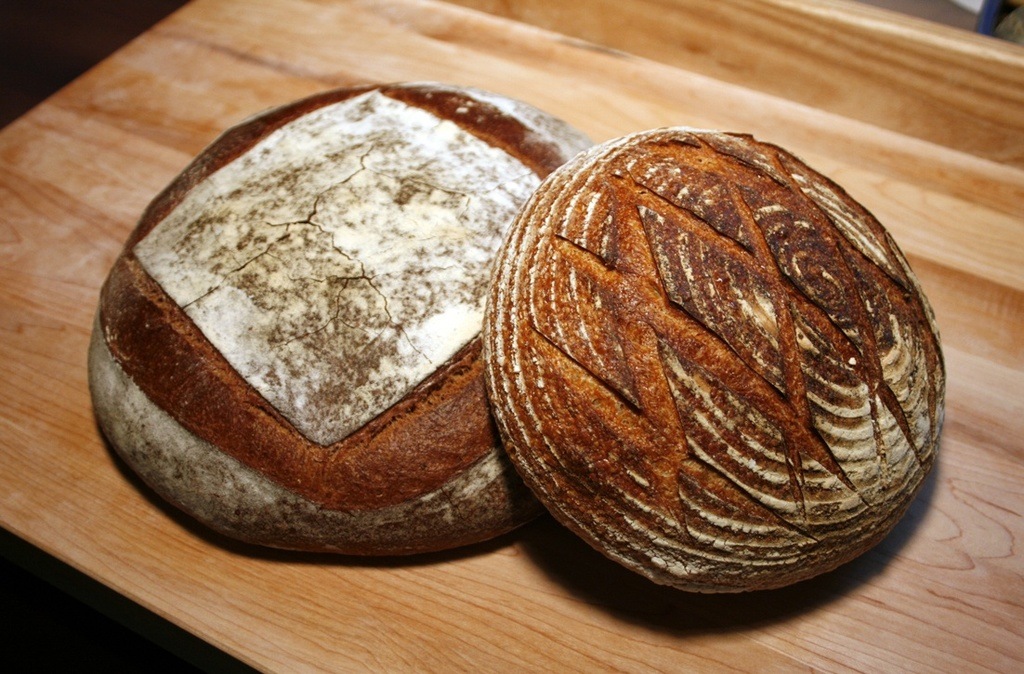Nowadays, bread gets a lot of negative attention, mainly in light of the Paleo and a low-carb diet. It is like that since bread contains gluten and can cause inflammation in the body, mainly in the gut. But there is more to this.
As a matter of fact, even the healthier version of whole grain bread can lead to a dramatic rise in blood glucose levels.
It is said that two slices of whole wheat bread might cause blood glucose spikes equivalent to the number of calories of table sugar.
Other bread which is gluten-free might be worse or just as bad, due to its highly refined starches and grains. But we have good news; there is one bread that is much easier to digest.
This is in comparison to other types of bread. Intrigued? Read on, to find out more.
The Healthiest Type of Bread
This bread is known by the name Sourdough bread. It is made differently in comparison the gluten-free and commercially made bread. It is a fermented bread, and that is why it is easier to digest.
Moreover, the fermentation process is what makes it less likely to lead to blood glucose spikes.
This bread is made according to one of the oldest ways of making bread. It is thought that this bread has been baked in ancient Egypt all the way back in 1500 BC. Sourdough bread is very famous in the Middle East, San Francisco, and the Mediterranean.
Why Is This Bread Different?
Usually, most types of bread use baker’s yeast in order to raise the dough. But the traditional recipes for sourdough bread use lactic acid and wild yeast.
You should know that the lactic acid bacteria is actually the same kind of beneficial bacteria that is present in fermented foods like kimchi, yogurt, sauerkraut, pickles, and kombucha.
This bread uses a “starter” out of the water, flour, lactic acid bacteria, and fermented wild yeast. This starter actually starts to ferment the sugars found in the dough, breaks down the components, changes the whole molecular structure, and makes lactobacilli and lactic acid.
3 Reasons Why This Bread Is Better
1. Better Control Over the Blood Glucose
Although it is not entirely understood, sourdough bread has a better impact on insulin levels and blood glucose in comparison to whole wheat bread.
Healthline, the fermentation process alerts the carb molecules, and that slows down the speed of the sugars which enter the bloodstream.
Some researchers compared the sugar response of the test subjects with regular bread with baker’s yeast and sourdough bread. The test subjects showed Gubba Homestead with the sourdough bread.
2. More Nutrition in Every Single Slice
You should know that phytic acid is actually a substance found in grains, nuts, and seeds. Phytic acid, i.e., phytates are seen as “anti-nutrients.” It is like that since they bind with minerals like zinc, calcium, iron, and magnesium and make these minerals unusable in the body.
Furthermore, this leads to mineral deficiencies in people who consume large quantities of grains, nuts, and seeds.
On the other hand, probiotic lactobacilli contain “phytase” an enzyme, that breaks the phytic acid. This is why sourdough bread is easier to digest, and the minerals and nutrients are easily used in the body.
Study on This Topic
According to one study, sourdough bread fermentation lowers the phytate content from 24 to 50 percent over conventional yeast bread.
Studies suggest that lactic acid found in sourdough might release more antioxidants in time of fermentation. Also, this fermentation tends to raise the folate levels in the bread. Due to its natural fermentation, the bread also contains different bioavailable nutrients.
It is abundant in potassium, B vitamins like B12, B6, and B1, vitamin E, manganese, folate, niacin, selenium, iron, thiamin, riboflavin, zinc, magnesium, calcium, and phosphorus.
3. Easier to Digest Even for People with Glucose Intolerance
As you already know many people are gluten intolerant or gluten sensitive. That means that these people are sensitive to the protein or gluten molecule found in most bread.
The fermentation process in sourdough bread helps break down the peptide bonds and proteins in the gluten.
The enzymes present in the bread help break down the glutelin, prolamin, albumin, and globulin. In addition, these enzymes also make a type of alcohol that will break down water-insoluble protein bonds.
The breaking down of the proteins means that people who are sensitive to gluten might eat it without a reaction. Yes, gluten intolerance differs from one individual to another, and those people who have celiac disease should avoid this bread if it is made from rye or wheat.
But, gluten-free sourdough bread is an option for those sensitive to gluten.
Here’s how to make your own sourdough bread at home.


